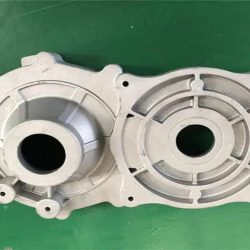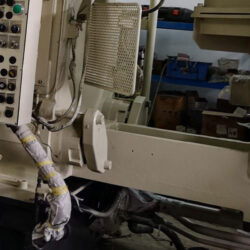The surface treatment of aluminum alloy die-casting is divided into pre-treatment and post-treatment. The pretreatment is to remove the oxide scale and oil stains on the surface, increase the adhesion after the treatment and improve the appearance effect.https://cncturning.biz/
There are three types of surface pretreatments for aluminum alloy die-casting sandblasting, sandblasting and phosphating. Post-treatment usually uses spraying, oxidation, electroplating and electrophoresis. Due to cost reasons, other surface treatment methods are only used for products with special requirements.
Choose from the cost. The pretreatment is sandblasting→sandblasting→phosphating→polishing, spraying→electrophoresis→oxidation→plating. After phosphating, spraying and electrophoresis can only be carried out, and oxidation and electroplating can no longer be carried out.https://www.cncmachiningptj.com/medical-machining
Choose from decoration and anti-corrosion. The pretreatment is polishing → phosphating → sand blasting → shot blasting, oxidation → electroplating → spraying → electrophoresis.
The car engine casing generally adopts sandblasting→spraying treatment.
Surface pretreatment method
Manual processing:
Such as scrapers, wire brushes or grinding wheels. The rust and scale on the surface of the workpiece can be removed by hand, but
High dynamic strength, low production efficiency, poor quality and incomplete cleaning.
Mechanical treatment method:https://www.cncmachiningptj.com/highspeedmachining
Mainly include wire brush roller stretching method, mechanical polishing method, shot peening method.
a. Wire brush roller polishing method, that is, the brush roller is driven by a motor, and the brush roller makes the high-speed brushes on the upper and lower surfaces of the strip rotate in the direction opposite to the movement of the rolled strip to perform descaling. Flush the system with closed-loop cooling water to wash off the oxide scale that has been brushed off.https://www.cncmachiningptj.com/cncaluminumparts
b. Mechanical polishing is a polishing method that obtains a smooth surface by cutting and plastically deforming the surface of the material to remove the polished protrusions. Usually, a grindstone strip, wool wheel, sandpaper, etc. are used.
It is mainly operated manually. Special parts such as the surface of the rotating body can be used with auxiliary tools such as turntables. The ultra-high-precision polishing method can be used in occasions with high requirements for surface quality.
Ultra-precision polishing is a special abrasive tool that can be pressed on the surface of the workpiece to be processed at high speed in a polishing liquid containing abrasives. The surface roughness of Ra0.008μm can be achieved through this technology.
c. Shot peening is divided into shot blasting and sand blasting:https://www.cncmachiningptj.com/CNCMilling1684
The surface treatment is made of steel grains or sand grains, which has high impact force and obvious cleaning effect. However, it is easy to deform the workpiece through shot peening, and the metal substrate will be deformed when the steel shot hits the surface of the workpiece (no matter it is shot peening or shot peening).
Because Fe304 and FE203 are not plastics, they will peel off after crushing, and the oil film and its materials will also be deformed. Therefore, shot blasting and sandblasting cannot completely remove the oil stains on the work piece with oil stains.https://www.cncmachiningptj.com/CNCTURNING
In the existing surface treatment methods of workpieces, the cleaning effect also lies in the sandblasting treatment. Sandblasting is suitable for high-demand workpiece cleaning. In the sandblasting process, a large amount of silicon dust cannot be removed, which seriously affects the health of workers and pollutes the environment.




